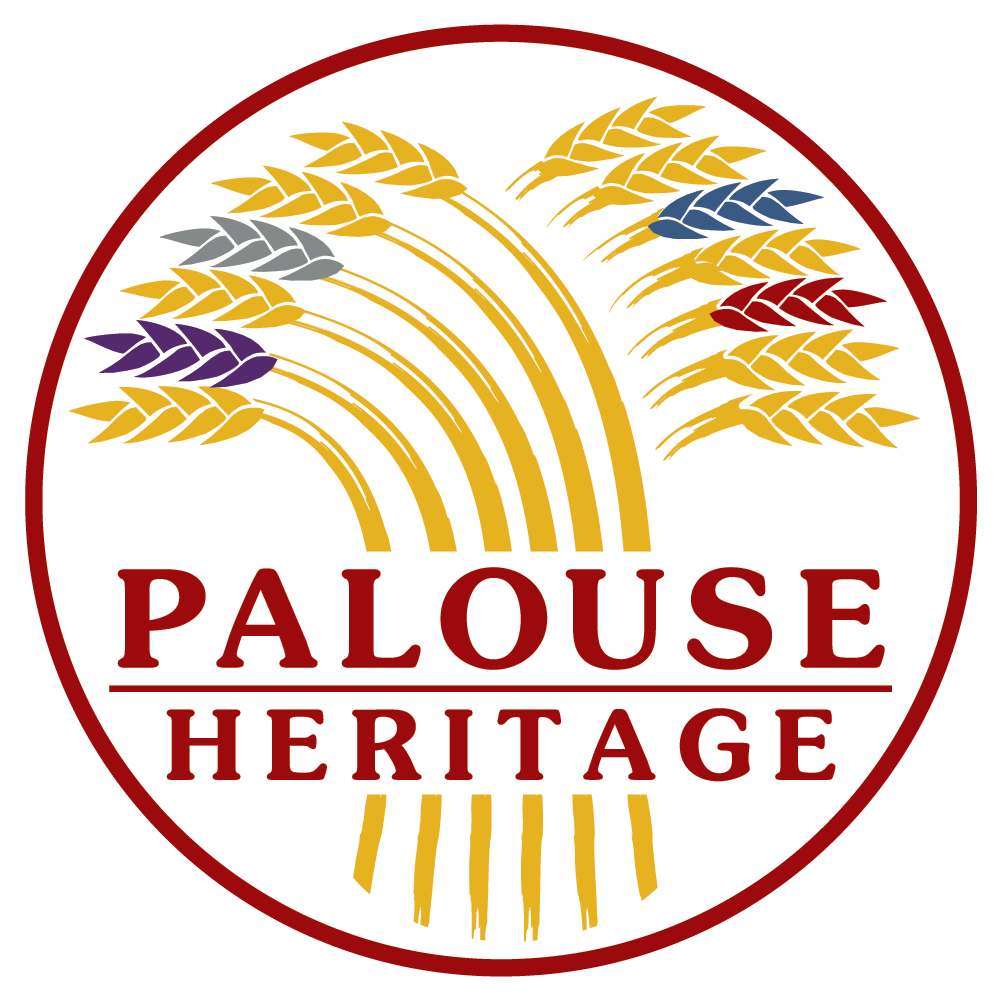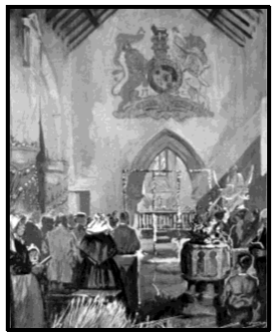The Holy Days of Harvest
Centuries of agrarian experience by European peasants and yeoman farmers led to adroit adaptations to the typically harsh conditions of life on the land. They learned to survive during the long continental winters through hard work and carefully arranged field operations suited to local conditions. Changes in the winds, soil textures and available moisture, and myriad other aspects of nature informed their management decisions throughout the year. The earth’s fertility meant life, perpetuation of family, and community wellbeing. The center of existence came to be the village church where people gathered weekly in the presence of an altar representing the axis mundi of heaven, earth, and the underworld. Here priests and pastors mediated a secure grace-filled dimension from past to future with hallowed reference to good soil and sowers, gleaners and reapers, and “fields white for harvest.”
Archibald Hartruck, A Harvest Festival in the Cotswolds
Boxwell Church on a manor formerly owned by Sir Walter Raleigh
The Sphere (London, September 21, 1901)
Medieval literature is rich with subjects of agricultural association derived from biblical texts, early church documentary accounts, and regional folklore. St. John the Baptist has been venerated at various times of the year as Herald of the Harvest, and since the Middle Ages on Midsummer Day—June 24, in part because of the metaphorical significance of his prophetic call for repentance before the baptism of Jesus: “His winnowing fork is in His hand, and He will thoroughly clear His threshing floor; and He will gather His wheat into the barn, but He will burn up the chaff with unquenchable fire” (Matthew 3:12). The holy days of the medieval harvest season reaffirmed the cycle of the Jewish agrarian calendar although these commemorations typically took place three to four months later with the cooler climates and later harvests of northern Europe.
The patron saint of harvesters and peasants, St. Isidore the Farmer (c. 1070-1130), was curiously honored less because of his agricultural diligence than his attention to prayer and worship even when interrupting field operations on his master’s estate in Spain. But St. Isidore, who is often portrayed in paintings and sculpture with a sickle fastened beneath his belt, remained steadfast in religious observations and his crops flourished. His wife, St. Maria Torriba (d. 1175), was also canonized for the miraculous provision of grain after she shared their few precious seeds with the needy and foraging birds.
Medieval European Harvest Holy Days and Festivals
June 24: St. John the Baptist’s Day—Feast of St. John, Herald of the Harvest (Midsummer Day)
August 1: Lammas Day (Loaf Mass)—Feast of First Fruits and Blessing of the Fields, ceremonial beginning of harvest
September 24: St. Rusticus Day—Feast of the Ingathering, traditional “Harvest-Home” celebrations (Autumnal Equinox)
September 29: Michaelmas—Feast of St. Michael and All Angels, ceremonial end of harvest and the farm year
November 11: Martinmas—Feast of St. Martin, general thanksgiving, end of fall wheat seeding, beginning of winter





